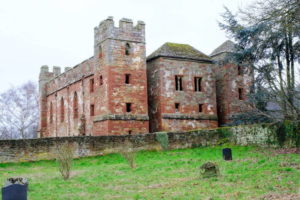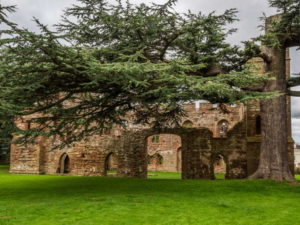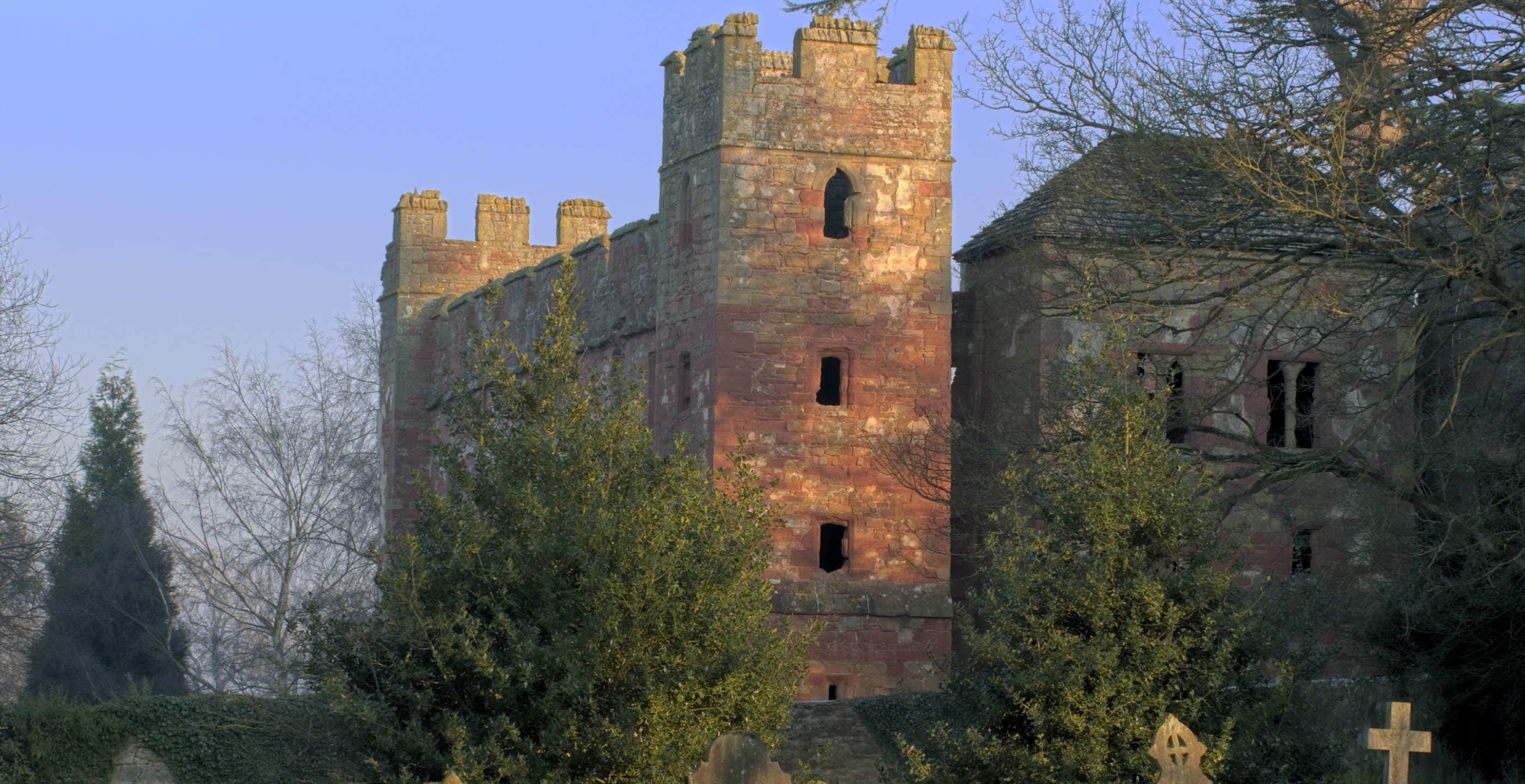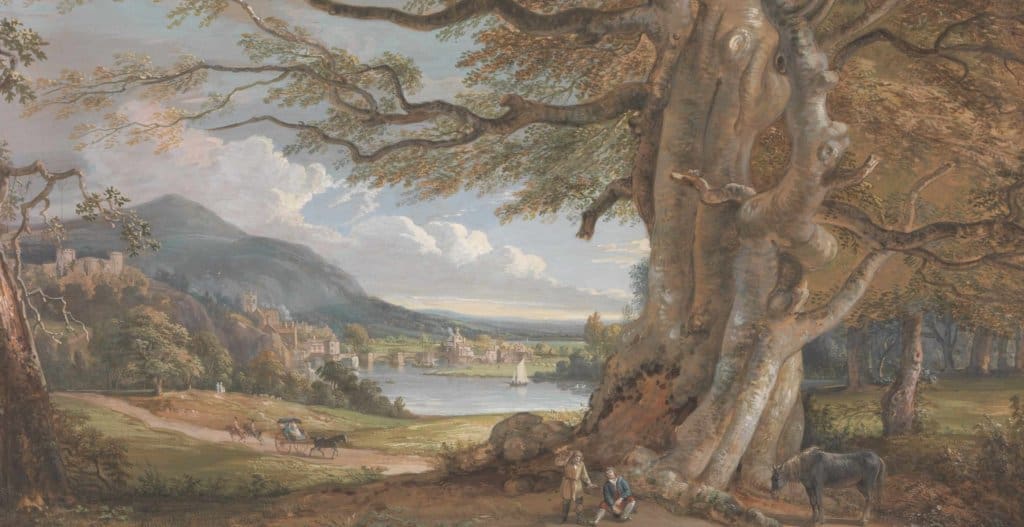Telephone: 0370 333 1181
Website: https://www.english-heritage.org.uk/visit/places/acton-burnell-castle/
Owned by: English Heritage. Opening times: During any reasonable daylight hours. However, the adjacent college closes the gates to the access road daily at dusk.
Public access: Via a short, wooded walk accessed by a gate in the car park. Free parking is available for five cars and one minibus. Dogs on leads are welcome.
The extensive remains of a fortified tower house. Built between 1284-1293 by Robert Burnell, Bishop of Bath and Wells, friend and advisor to King Edward I, the location of the manor house was important, close to the old Roman road of Watling Street. The influence of Bishop Burnell was such that this little Shropshire village twice hosted the English Parliament, first in 1283 and again in 1285. All that remains open to the public is the shell of the former private residence.
However, there is sufficient architectural detail to indicate some of the importance both of the residence and of the location. The double-storeyed living area and projecting corner towers are in the style of a typical Norman keep. The large windows with their ornate traceries indicate that status and comfort were just as important as defence, if not more so. The towers were all originally battlemented. In the 18th century when the south-west tower was converted to a dovecot, a pyramidal roof replaced the battlements of this tower. The dovecot tower is one of two flanking the west-facing private accommodation of the castle, which has a similar pyramidal roof.

Above: Acton Burnell Castle
As a senior office-holder of the realm, Robert Burnell would have been expected to entertain his king appropriately on his regular visits, and what little remains of the ancillary buildings and internal structure suggests he was able to do so in right royal style. The king is known to have issued several statutes while staying at Acton Burnell, and when attending the Parliament of 1283 passed sentence of death on David, the brother of Llywelyn, Prince of Gwynedd.
Burnell used the beautiful warm red sandstone to build nearby St Mary’s Church, as well as to fortify his comfortable residence. The Burnell family had lived in Acton Burnell for at least two centuries before Robert Burnell’s rise to wealth and fame. By 1420 his impressive tower house had fallen into disuse, although the 18th century saw a new building, Acton Burnell Hall, constructed nearby. The Parliament held in 1283 is of importance both historically and constitutionally. Said to have been held in a local tithe barn, it is believed to be the first parliament with representation for commoners.

Above: Acton Burnell Castle



